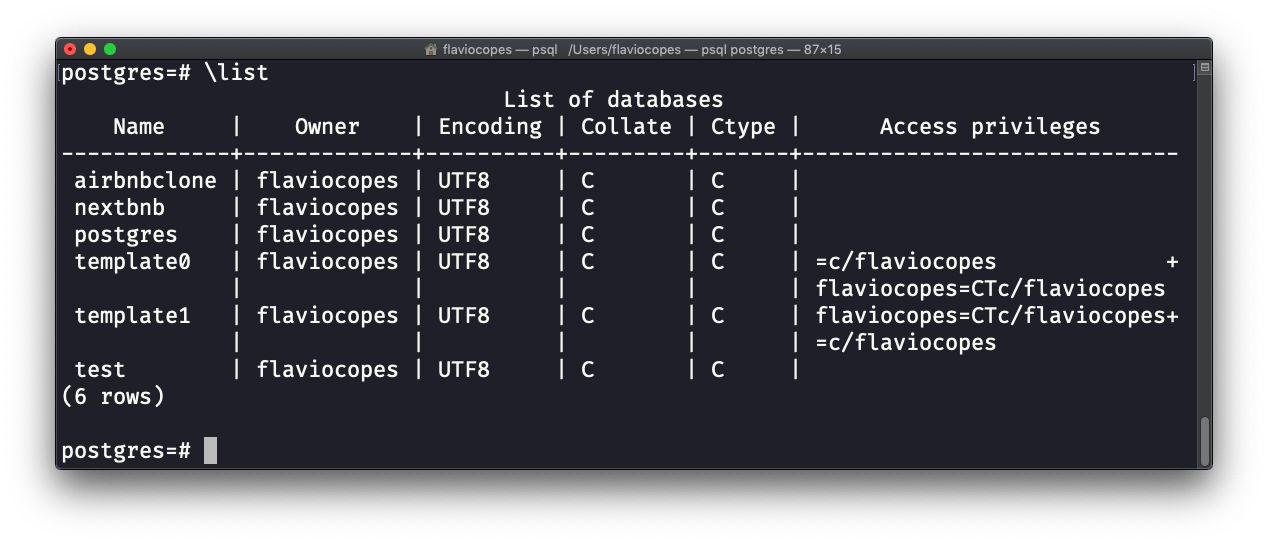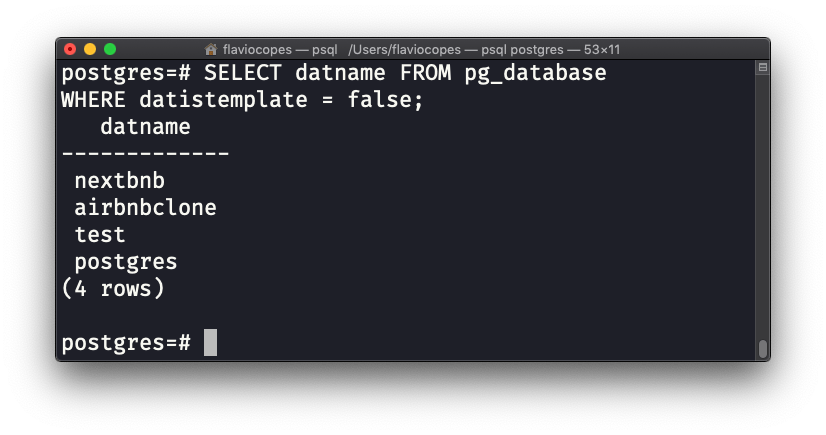How to list all databases using PostgreSQL
A quick explanation of how to list all databases inside the `psql` tool in PostgreSQL, or using SQL
You can perform this task in 2 ways.
One is using psql.
Type the command \list (or \l), and PostgreSQL will show you the list of databases (and templates):

In this case, the databases list is
airbnbclonenextbnbpostgrestest
template0 and template1 are templates.
Templates are templates for new databases, and you can use them to pre-populate new databases using the syntax CREATE DATABASE databasename TEMPLATE template0.
By default, the template used when creating a new database using CREATE DATABASE databasename is template1.
It’s a topic that does not matter now, but I just want you to know what templates are.
A more advanced view, which includes the disk size of each single database, can be retrieved using \list+ (or \l+):

The other way to list databases is by using a SQL query.
Run:
SELECT datname FROM pg_database
WHERE datistemplate = false;This will list databases, excluding templates:

download all my books for free
- javascript handbook
- typescript handbook
- css handbook
- node.js handbook
- astro handbook
- html handbook
- next.js pages router handbook
- alpine.js handbook
- htmx handbook
- react handbook
- sql handbook
- git cheat sheet
- laravel handbook
- express handbook
- swift handbook
- go handbook
- php handbook
- python handbook
- cli handbook
- c handbook
subscribe to my newsletter to get them
Terms: by subscribing to the newsletter you agree the following terms and conditions and privacy policy. The aim of the newsletter is to keep you up to date about new tutorials, new book releases or courses organized by Flavio. If you wish to unsubscribe from the newsletter, you can click the unsubscribe link that's present at the bottom of each email, anytime. I will not communicate/spread/publish or otherwise give away your address. Your email address is the only personal information collected, and it's only collected for the primary purpose of keeping you informed through the newsletter. It's stored in a secure server based in the EU. You can contact Flavio by emailing flavio@flaviocopes.com. These terms and conditions are governed by the laws in force in Italy and you unconditionally submit to the jurisdiction of the courts of Italy.